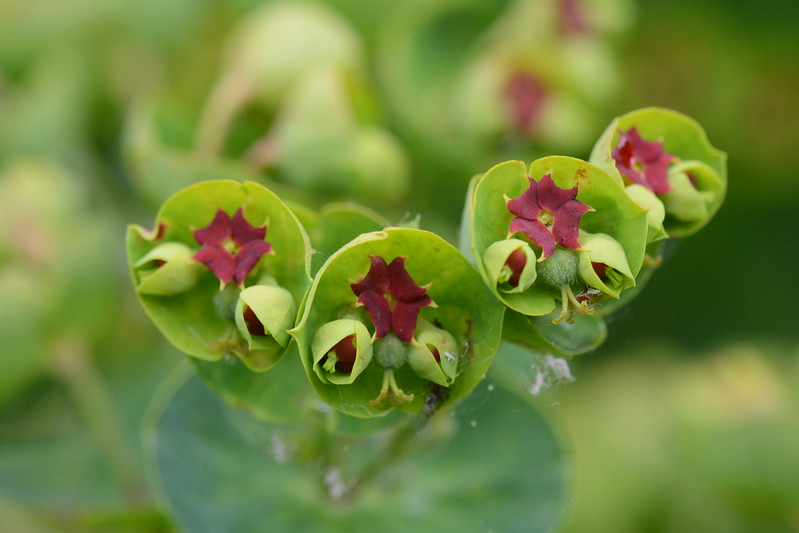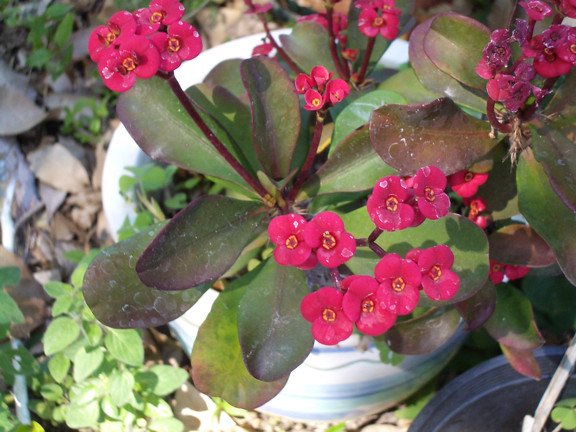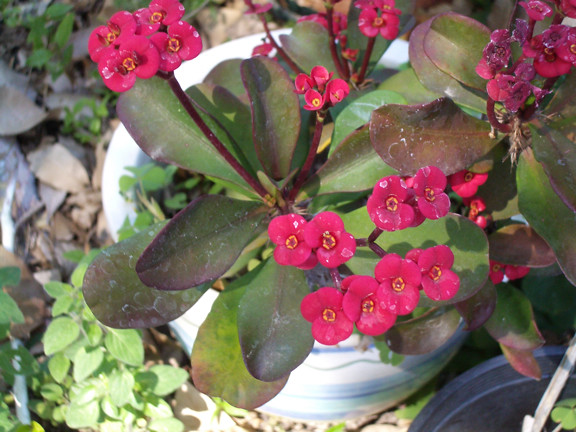Are you a plant lover looking to add some exotic beauty to your indoor or outdoor garden? Look no further than euphorbia With its diverse range of species and stunning leaves, euphorbia is a popular choice for both novice and experienced gardeners.
In this comprehensive guide, we will walk you through everything you need to know about growing and caring for euphorbia. So, let’s dive in and discover the secrets to nurturing these remarkable plants!
What is Euphorbia:
Euphorbia is a large genus of flowering plants that belongs to the family Euphorbiaceae. With over 2,000 species, euphorbia plants come in a wide variety of shapes, sizes, and colors, making them a versatile choice for any garden.
These plants are native to Africa, Madagascar, and parts of the Arabian Peninsula, where they have adapted to withstand harsh climates and arid conditions.
| Category | Details |
|---|---|
| Scientific Name | Euphorbia |
| Family | Euphorbiaceae |
| Common Names | Spurge |
| Plant Type | Varied (includes succulents, shrubs, etc.) |
| Native Range | Global (diverse species in different regions) |
| Habitat | Diverse, ranging from deserts to tropical areas |
| Appearance | Variable; succulent or non-succulent, often with unique floral structures |
| Toxicity | Many species are toxic if ingested |
| Special Features | Milky sap, known as latex, present in some species; diverse growth forms |
| Uses | Ornamental plants, some medicinal uses, latex extraction in some cases |
| Cultivation | Varied; some species suitable for gardens, others for arid landscapes |
| Propagation | Seeds, cuttings, or division depending on the species |
| Notable Species | Euphorbia pulcherrima (Poinsettia), Euphorbia milii (Crown of Thorns) |
| Caution | Handle with care; latex can be irritant and toxic |
| Note | The Euphorbia genus is extensive, with over 2,000 species; characteristics can vary widely between species |

Choosing the Right Euphorbia:
Researching Euphorbia Species:
Before selecting a euphorbia species, it is essential to conduct thorough research. Different species have different growth habits, sunlight requirements, and water needs.
Familiarize yourself with the characteristics of the species you are interested in growing to ensure a successful gardening experience.
Assessing Growing Conditions:
Consider the environment in which you plan to grow euphorbia. Some species thrive in full sunlight, while others prefer partial shade.
Similarly, certain euphorbia plants prefer dry soil, while others require more moisture. By understanding these factors, you can choose a euphorbia species that will flourish in your specific conditions.
Planting Euphorbia:
Selecting the Right Pot or Planting Location:
If you’re planning to grow euphorbia indoors, choose a pot with proper drainage holes to prevent waterlogging. Outdoor planting requires well-drained soil to replicate the arid habitat of euphorbia plants.
Preparing the Soil:
Euphorbia plants thrive in a well-draining soil mix. Prepare the soil by combining equal parts of potting soil, perlite or sand, and peat moss. This mixture provides excellent drainage while retaining adequate moisture for the plant’s roots.
Planting Guidelines:
Dig a hole in the soil or pot that is slightly larger than the euphorbia’s root ball. Place the plant in the hole and backfill with the prepared soil mixture. Gently pat the soil around the base of the plant to secure it in place.
Watering Routine:
After planting, water the euphorbia thoroughly to settle the soil and encourage root establishment. For indoor plants, water them when the top inch of soil feels dry, and for outdoor plants, water only when the soil is completely dry.
Sunlight Requirements:
Most euphorbia species thrive in full sunlight. Ensure that your plant receives at least 6 hours of direct sunlight each day. However, be cautious of intense afternoon sunlight, as it can scorch the leaves of some species.

Caring for Euphorbia:
Watering Euphorbia:
Euphorbia plants have moderate water requirements. While it is important not to overwater them, these plants do require regular watering. Allow the soil to dry out between watering sessions to prevent root rot.
Fertilizing Routine:
Euphorbia plants benefit from a well-balanced fertilizer. During the growing season, use a diluted liquid fertilizer once every two weeks. In the dormant winter months, reduce fertilization to once a month or stop altogether.
Pruning and Maintenance:
Regular pruning helps maintain the shape and size of euphorbia plants. Wear gloves and protective clothing during pruning, as some species produce a milky sap that may irritate. Remove dead or damaged branches and shape the plant as desired.
Handling the Milky Sap:
Many euphorbia species produce a milky sap that can cause skin irritation and is toxic if ingested. Take precautions when handling euphorbia plants, such as wearing gloves and avoiding contact with the eyes or mouth. In case of accidental exposure, wash the affected area thoroughly with soap and water.
Common Problems and Solutions:
Mealybugs and Aphids:
These tiny pests can infest euphorbia plants, leading to stunted growth and yellowing leaves. To combat them, use a gentle insecticidal soap or wipe the leaves with a diluted alcohol solution. Regularly inspect your plants to catch infestations early.
Root Rot:
Overwatering or poorly draining soil can cause root rot in euphorbia plants. To prevent this, ensure proper drainage and avoid overwatering. If root rot occurs, remove the affected portions and repot the plant in fresh, well-draining soil.
Euphorbia decorative tips for the garden
Here are some decorative tips for the garden:
Tall Planters:
Place euphorbia in tall planters or raised beds to showcase its unique form and make it stand out. This can also help control its spread if it is a spreading variety.
Group Planting:
Group several Euphorbia plants together to create a focal point in your garden. This works well if you have several varieties of euphorbia with different heights or flower colors.
Container Gardening:
Grow euphorbia in containers or pots, especially if you have limited space or want to control its growth. Containers also allow you to move the plant around for better sunlight exposure.
Enhance Landscaping Features:
Use euphorbia to highlight specific features in your garden, such as pathways, garden edges, or around large focal plants.
Color Coordination:
Choose euphorbia varieties with flower colors that match the overall color scheme of your garden. This can enhance the visual harmony of the space.
Focal points:
Place euphorbia near garden focal points such as statues, birdbaths, or decorative elements to attract attention and create a harmonious design.

Conclusion:
Congratulations! You are now equipped with all the knowledge you need to successfully grow and care for euphorbia plants.
Remember to choose the right species, provide adequate sunlight and water, and handle these plants with care due to their milky sap.
With their striking beauty and low maintenance requirements, euphorbia plants are sure to add a touch of exotic allure to your garden. So go ahead, get your hands dirty, and enjoy the journey of nurturing these remarkable plants!
Is Euphorbia a poisonous plant?
Yes, many species of Euphorbia are toxic if ingested. The milky sap, known as latex, can cause skin irritation and may be harmful if in contact with the eyes or ingested.
What is special about Euphorbia?
Euphorbia is a diverse genus with over 2,000 species, ranging from succulents to shrubs. Some species have unique floral structures, and the milky latex sap is a distinctive feature. It has various uses, including ornamental, medicinal, and in some cases, latex extraction.
Is Euphorbia a medicinal plant?
Some species of Euphorbia have traditional medicinal uses. However, caution is advised, as the latex can be toxic, and the therapeutic properties vary between species.
Is Euphorbia a lucky plant?
There is no specific belief in luck associated with Euphorbia. Its use is more common for ornamental purposes or specific cultural and medicinal practices.

